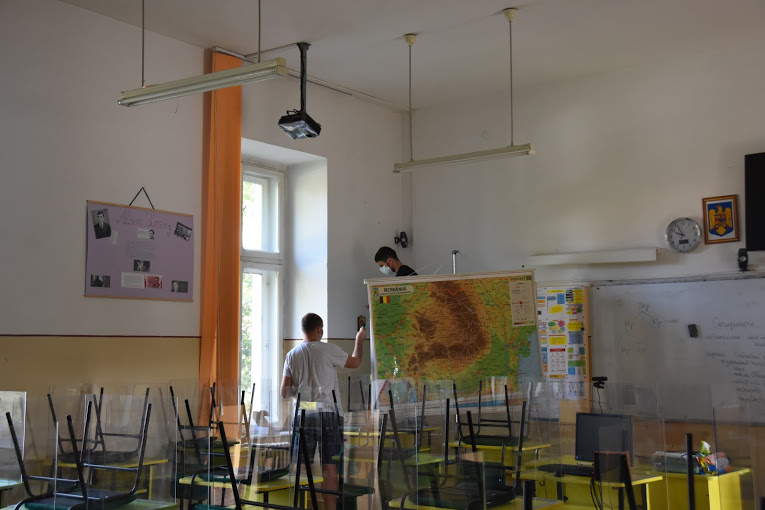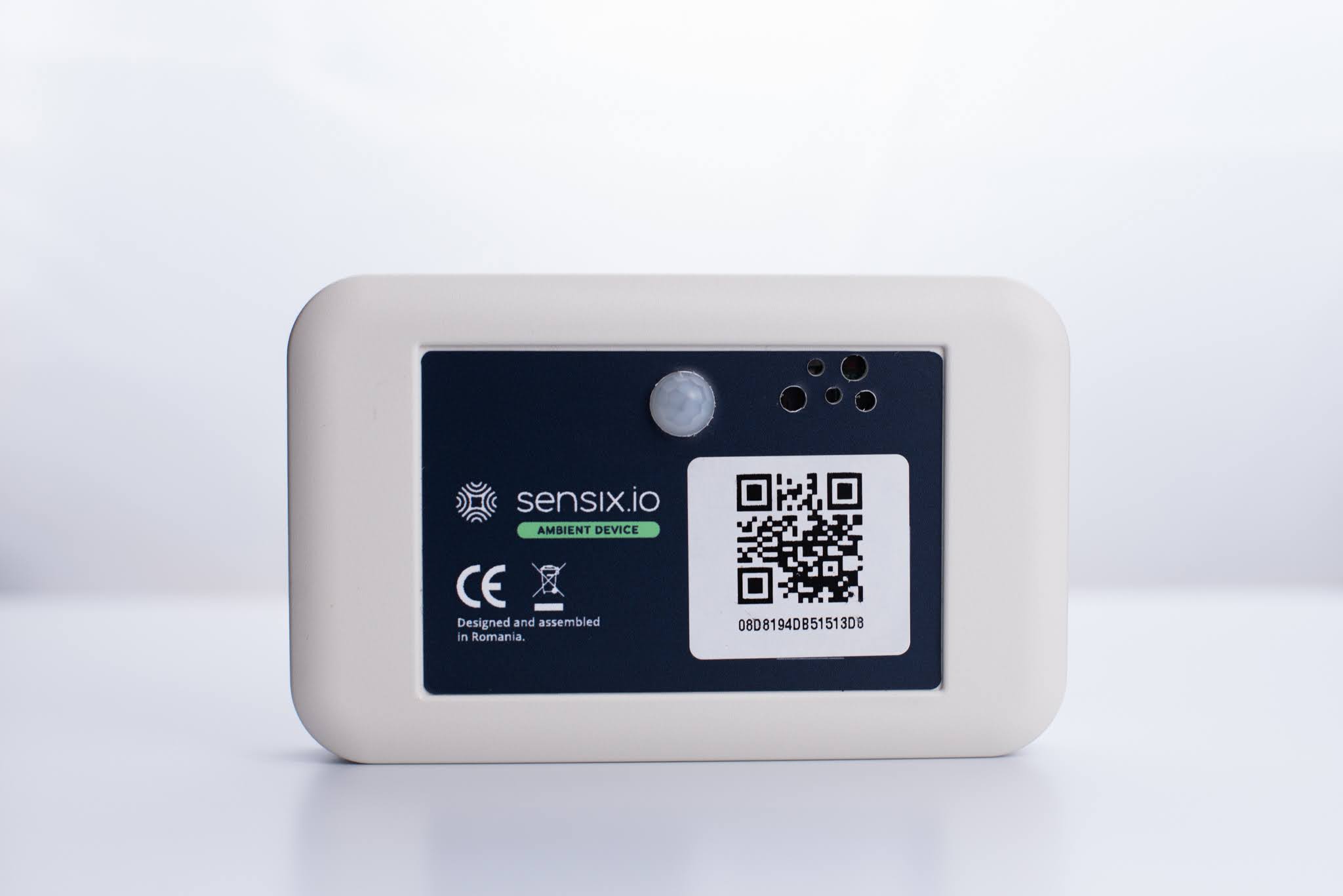Indoor Air Quality in Schools is serious
by Sensix Team
over 2 years agoWhy is it serious?
Poor indoor air quality can have a negative effect on our health. It’s a fact (that we hope you knew). Things get even more serious when kids come around. Poor indoor air quality in schools can have (and most likely will have) a negative effect on children’s health and academic performance. This is the subject we want to address in this blog post. And that’s what we are going to do.
IAQ is (more) important to schools
Why more (than to any other building)? Because kids’ bodies are actively growing and they breathe higher volumes of air relative to their body weights than adults do. They also spend more time in school or group structures (preschools, day nurseries) than in any indoor environment other than the home. That’s why kids are considered as one of the most sensitive groups to atmospheric pollution.
Poor IAQ can lead to a large variety of health problems and potentially affect comfort, concentration, and staff/student performance. Poor indoor air quality can hasten building deterioration. Understanding the importance of good IAQ in schools is the backbone of developing an effective IAQ program.
IAQ is defined by
- CO2 - exhaled air is usually the largest source of CO2 in classrooms;
- VOC - formaldehyde (building materials and furnishings ) and terpene (cleaning products, new wood products, and outdoor air) concentrations are often highest;
- PM2.5 (dust) - due to continuous resuspension of soil particles (13%) and a mixed source (34%) comprising organic (skin flakes, clothes fibers, possible condensation of VOCs) and Ca-rich particles (from chalk and building deterioration). Other sources: unpaved playgrounds, secondary pollution, and motor vehicles;
- Humidity - high relative humidity can promote the growth of mold and mildew, and low relative humidity can accelerate the release of spores into the air.
- Temperature - is a factor in thermal comfort and overall performance of students.
A study conducted at Westview High School shows how scores were affected by varying temperatures. This is what the results revealed:
- at 61 degrees Fahrenheit (16°C), students averaged a score of 76%;
- at 72 degrees Fahrenheit (22°C), students averaged a score of 90%;
- at 81 degrees Fahrenheit (27°C), students averaged a score of 72%.
Preventing/responding to IAQ problems
You can’t fight an invisible enemy, right? Therefore, preventing or responding promptly to IAQ problems should start with baseline-ing, asking how are things now.

Risk reduction strategies
There are six basic control methods that can lower concentrations of indoor air pollutants:
- Source management: eliminating or not allowing pollutant sources to enter the school; improving technology and/or materials to reduce emissions; replacing pollutant sources; placing a barrier around the source so that it releases fewer pollutants into the indoor air.
- Local exhaust: removing (exhausting fume hoods and local exhaust fans to the outside) point sources of indoor pollutants before they disperse.
- Ventilation: lowering pollutant concentrations by diluting polluted (indoor) air with cleaner (outdoor) air.
- Exposure control: moving the pollutant source away from occupants or even relocating susceptible occupants;
- Air cleaning: filtering particles and gaseous contaminants as air passes through ventilation equipment;
- Education: teaching and training school occupants about IAQ issues.
Sensix Ambient comes to help

Sensix Ambient Solution gives a better and complete image to auditors and administrators in order to come up with data-driven solutions. In one case, we identified that thermal inertia differs significantly from classroom to classroom. That school failed to establish a thermal equilibrium, thus if more heat energy was introduced, some classrooms were extremely hot (27°C) and others were extremely cold (17°C) during the winter.
The proposed solution:
- upgrade the thermal infrastructure to keep the balance right;
- upgrade thermal insulation of the building on the west side.
You can find more about our public schools project/case study right here.
The most relevant indicators Sensix tracks

- Ambient: CO2, volatile organic compounds, temperature, relative humidity, atmospheric pressure, illuminance, movement;
- Energy: heat/electric energy, along with lots of other expert-level parameters.
Learn more: https://sensix.io/solution/.
Maintaining the gains recorded in the pandemic
COVID-19 brought indoor air quality monitoring upfront. People became aware of the importance of air quality on their health. This is the most important lesson we need to remember in the soon-to-be, hopefully, post-pandemic period: the concern should not be centered on costs but on the occupant’s health.
Schools have some unique aspects that we need to take into consideration, for example, the fact that the occupants are close together, with the typical school having approximately four times as many occupants as office buildings for the same amount of floor space.
We trust that there will be, in the near(est) future, local initiatives to improve air quality in schools. If nothing else, things will speed up, due to the EU’s new regulations regarding sustainability (responsible and efficient energy usage). Hope for the best: green schools, happy and healthy kids.
😮💨 Interested in learning more? Check out the Unites States Environmental Protection Agency Reference Guide for Indoor Air Quality in Schools.
Previous articles
The Role of Artificial Intelligence in Optimizing Energy Efficiency in Smart Buildings
6 days agoIn an era where climate change and environmental sustainability are at the forefront of global concerns, the need for energy-efficient buildings has become more pressing. Buildings are responsible for a significant portion of global energy consumption and carbon emissions, making them a key focus for energy conservation efforts. To enter the era of smart buildings, where cutting-edge technologies, sensors, and artificial intelligence (AI) are transforming the way we think about energy efficiency, here are some of our thoughts.
Read moreWeathering the Elements: Tips for Riding Out Extremes with less Energy
20 days agoWeather is a major factor that affects energy consumption by determining specific patterns. In particular, temperature, humidity, precipitation, and wind speed all have a significant impact on how much energy we use. Several studies have explored the link between various weather conditions and energy use.
Read moreEmbracing Plastic Free July
2 months agoPlastic Free July is a global initiative aims to gather as many people as possible to be part of the solution to plastic pollution. Everything so we can have cleaner air, water, forests, etc.
Read more